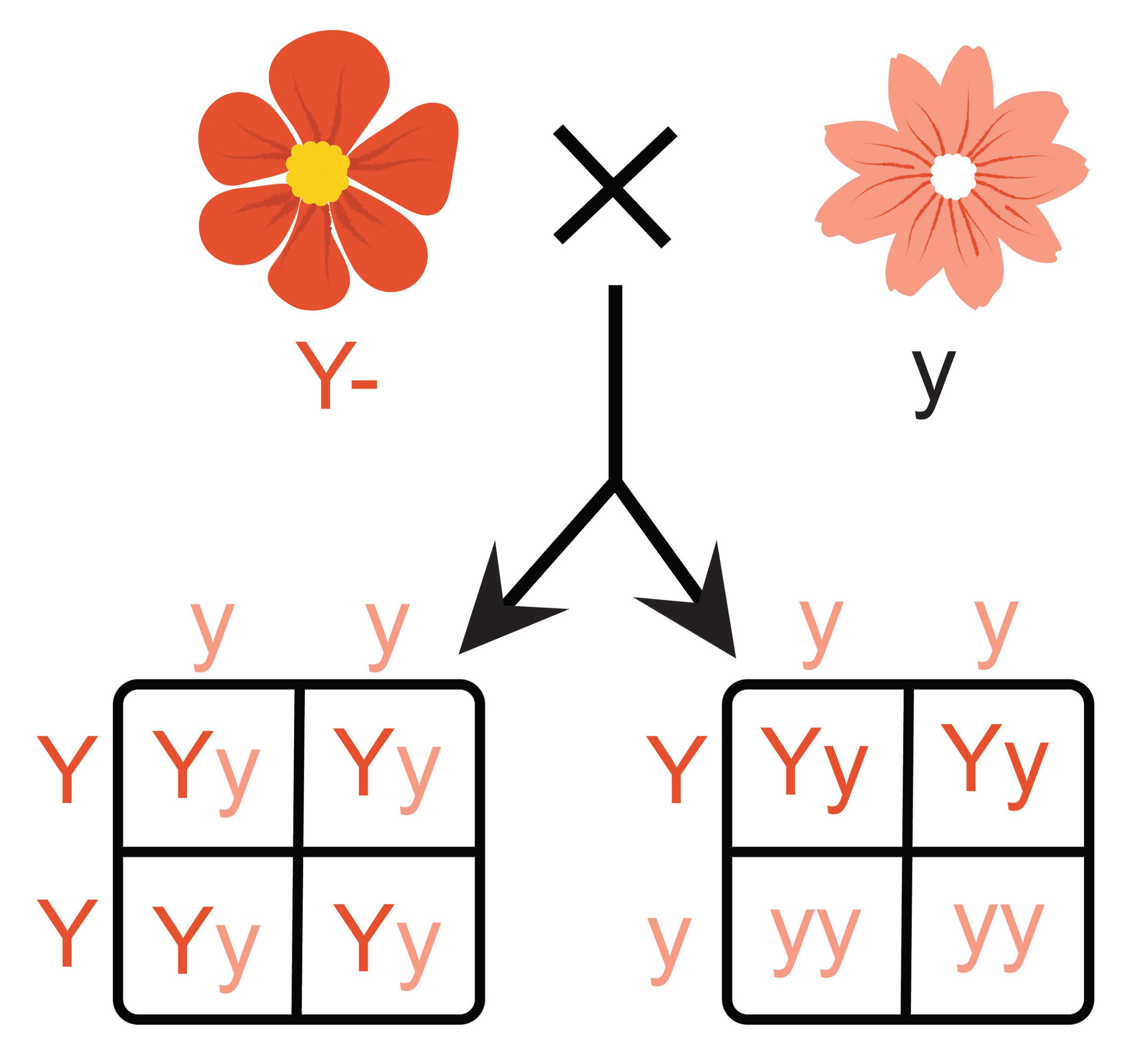
Define the Test cross.
Answer
480k+ views
Hint: This cross has a ratio of 1:1:1:1 phenotypic ratio which is the classic Mendelian ratio for this cross in which the alleles of the two genes assort independently into gametes.
Complete answer:
The phenomenon of test cross was first introduced by Gregor Mendel. When the

Additional Information: Test cross and Back cross:
Test cross and backcross are two of the types of crosses introduced by the scientist Gregor Mendel. In the test cross, a dominant phenotype is crossed with the homozygous recessive genotype in order to discriminate between homozygous dominant and heterozygous genotypes, while in backcross, the F1 is crossed with one of the parents or genetically identical individual to that of the parent. The main difference between the test cross and the backcross is that the test cross is used to discriminate the genotype of an individual which is phenotypically dominant whereas a backcross is used to recover an elite genotype from a parent which bears an elite genotype.
Note: Mendelian inheritance was originally proposed by Gregor Johann Mendel in 1865 and 1866. These were rediscovered in 1900 and were made infamous by William Bateson. The third law is the Law of dominance in which one allele is dominant over the other. The basis of Mendel’s law is the crossing of two parents leading to resultant offspring. Its phenotypic ratio is similar to the phenotypic ratio of the law of segregation which is 3:1.
Complete answer:
The phenomenon of test cross was first introduced by Gregor Mendel. When the

Additional Information: Test cross and Back cross:
Test cross and backcross are two of the types of crosses introduced by the scientist Gregor Mendel. In the test cross, a dominant phenotype is crossed with the homozygous recessive genotype in order to discriminate between homozygous dominant and heterozygous genotypes, while in backcross, the F1 is crossed with one of the parents or genetically identical individual to that of the parent. The main difference between the test cross and the backcross is that the test cross is used to discriminate the genotype of an individual which is phenotypically dominant whereas a backcross is used to recover an elite genotype from a parent which bears an elite genotype.
Note: Mendelian inheritance was originally proposed by Gregor Johann Mendel in 1865 and 1866. These were rediscovered in 1900 and were made infamous by William Bateson. The third law is the Law of dominance in which one allele is dominant over the other. The basis of Mendel’s law is the crossing of two parents leading to resultant offspring. Its phenotypic ratio is similar to the phenotypic ratio of the law of segregation which is 3:1.
Recently Updated Pages
Master Class 9 General Knowledge: Engaging Questions & Answers for Success

Master Class 9 English: Engaging Questions & Answers for Success

Master Class 9 Science: Engaging Questions & Answers for Success

Master Class 9 Social Science: Engaging Questions & Answers for Success

Master Class 9 Maths: Engaging Questions & Answers for Success

Class 9 Question and Answer - Your Ultimate Solutions Guide

Trending doubts
Give 10 examples of unisexual and bisexual flowers

Draw a labelled sketch of the human eye class 12 physics CBSE

Differentiate between homogeneous and heterogeneous class 12 chemistry CBSE

Differentiate between insitu conservation and exsitu class 12 biology CBSE

What are the major means of transport Explain each class 12 social science CBSE

Why is the cell called the structural and functional class 12 biology CBSE




